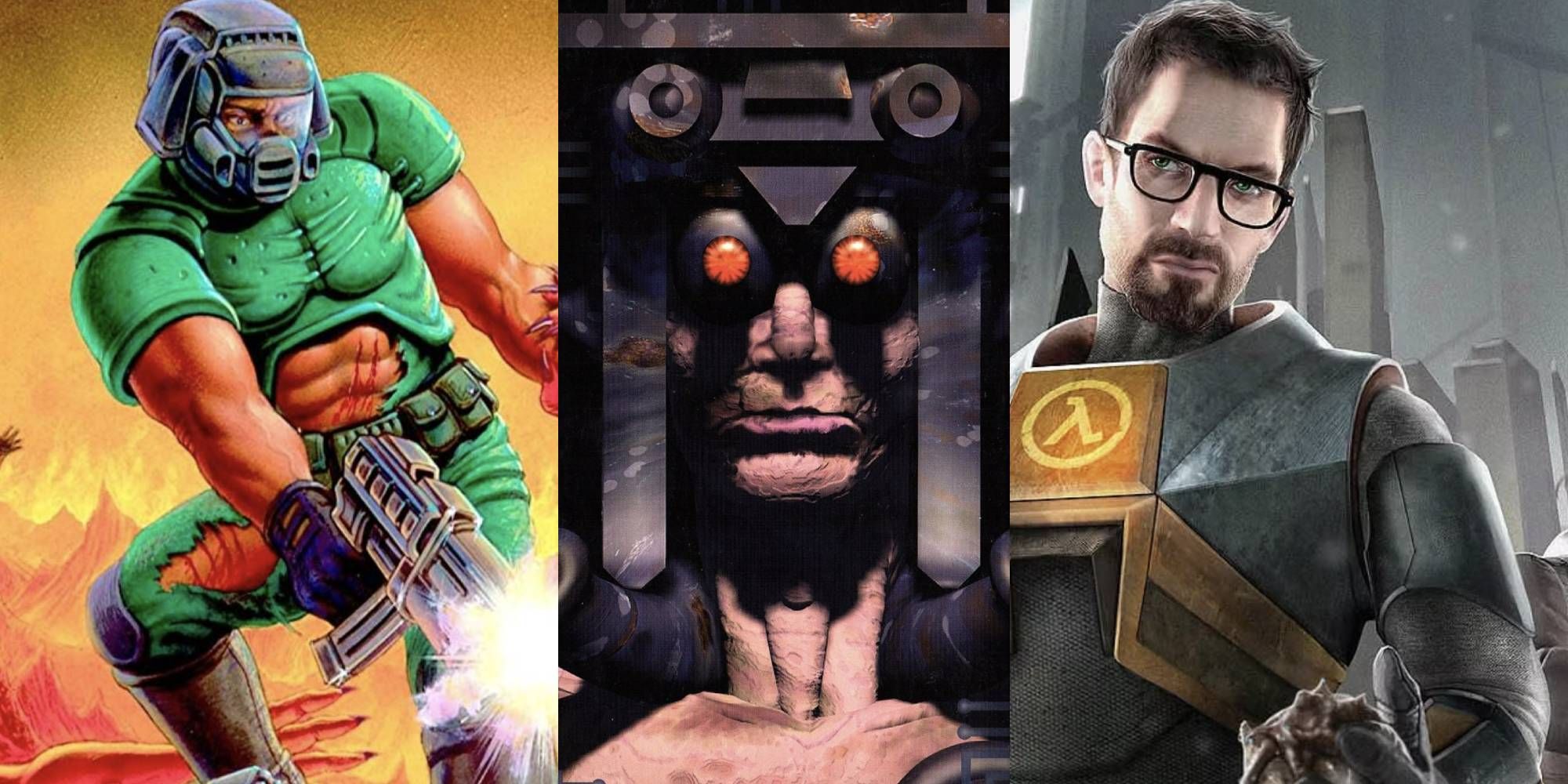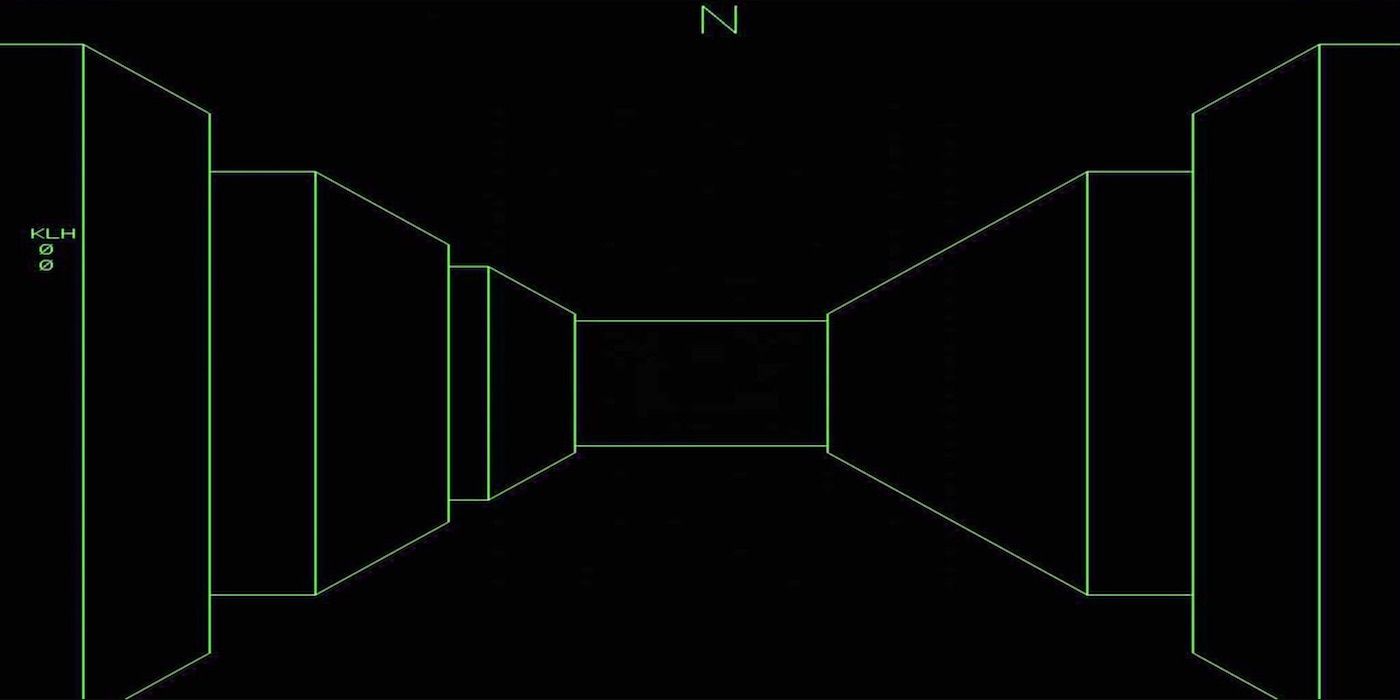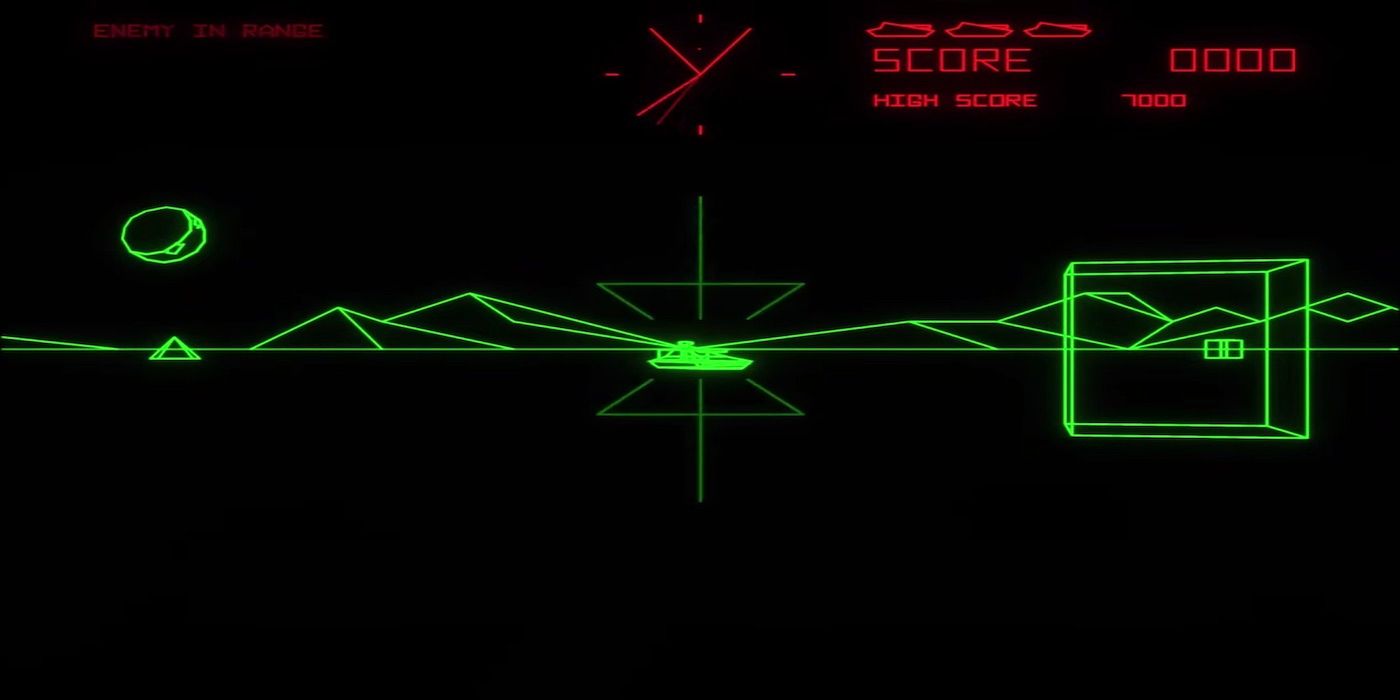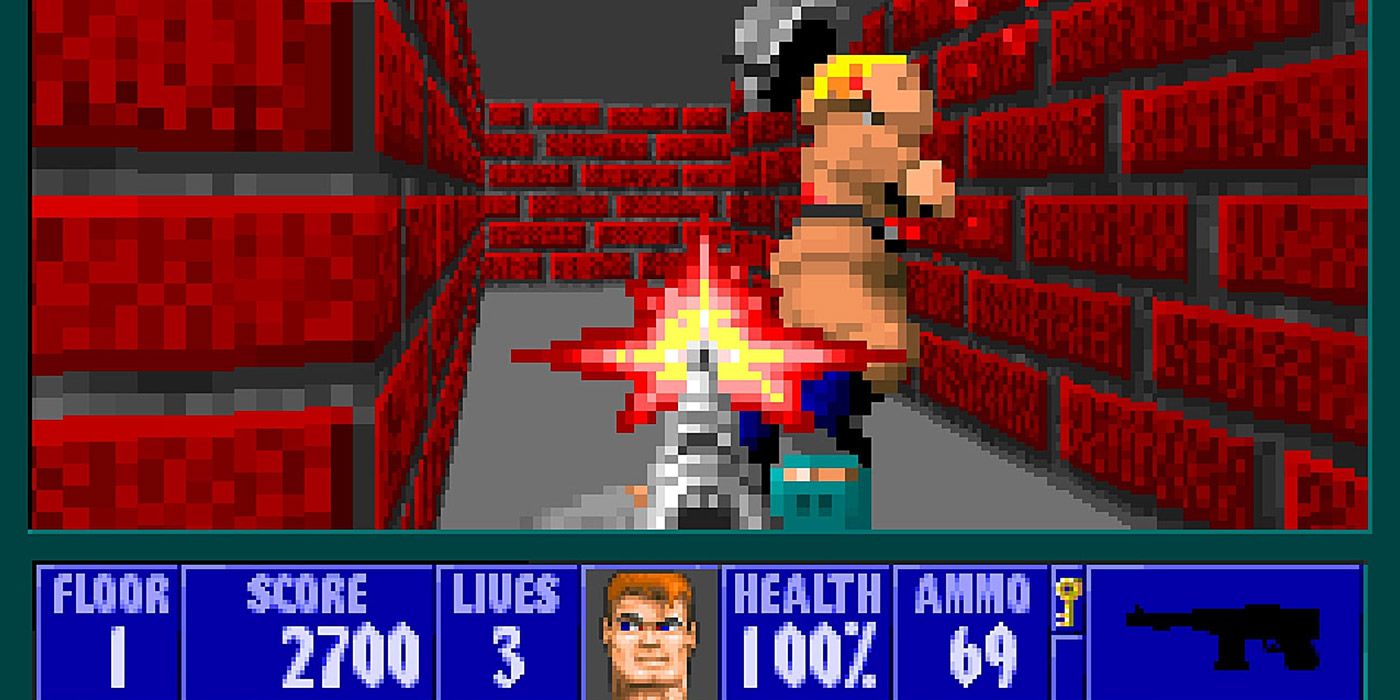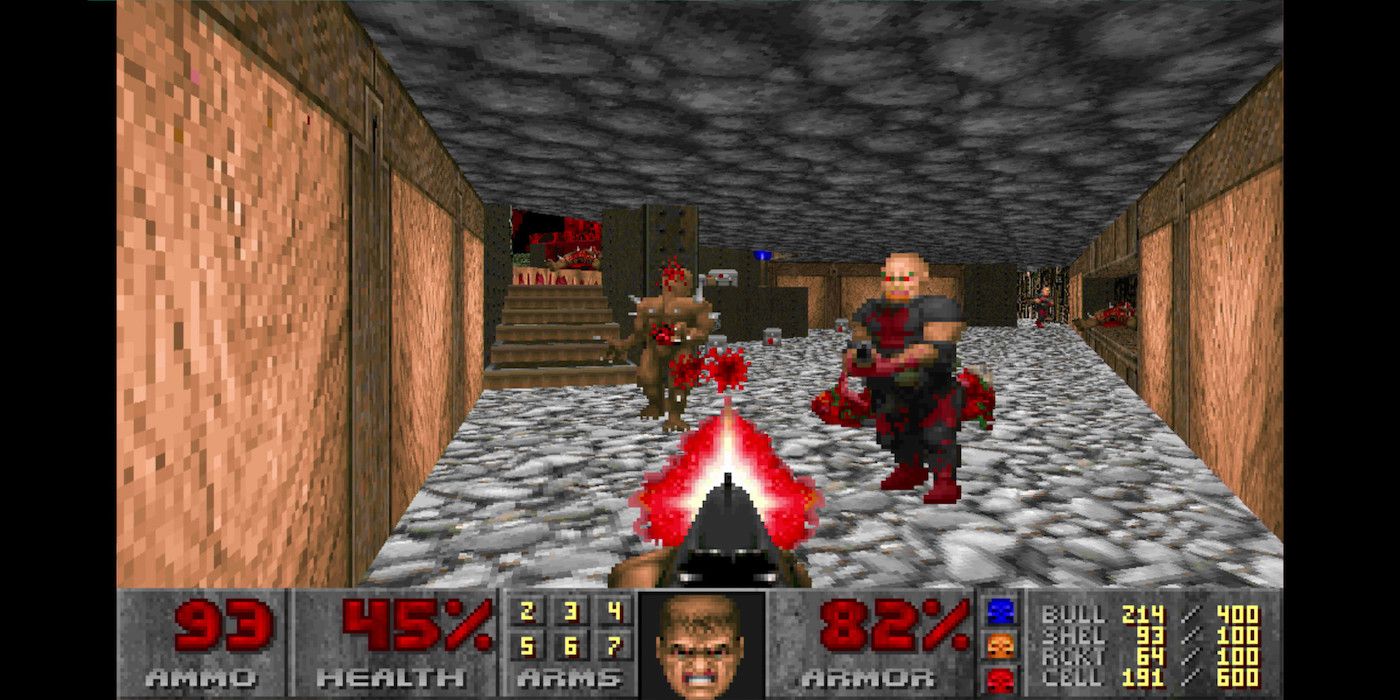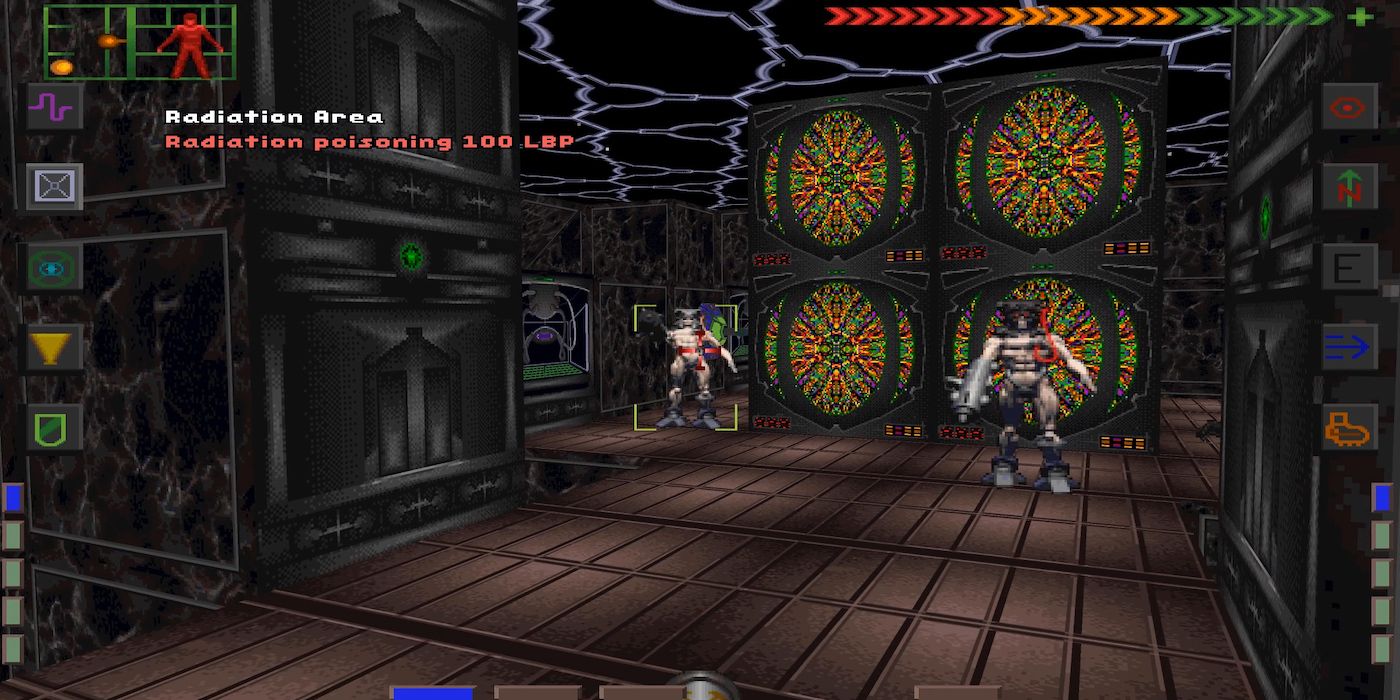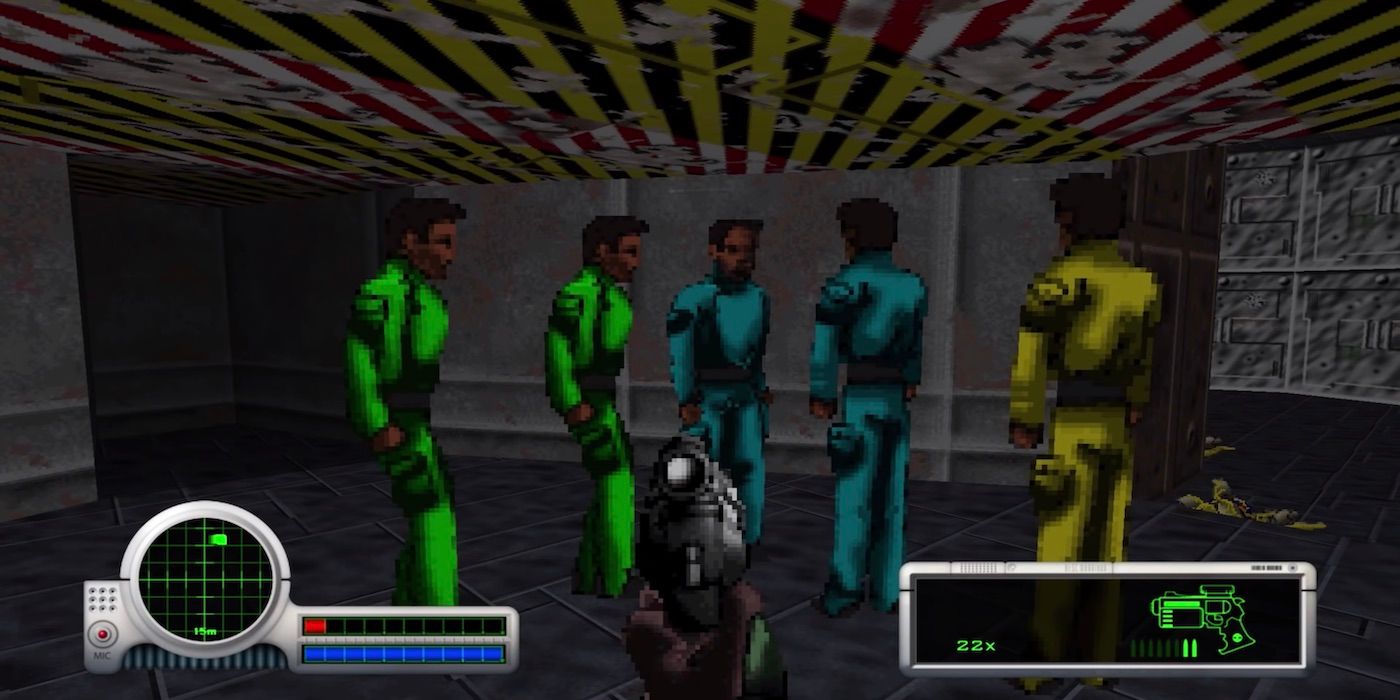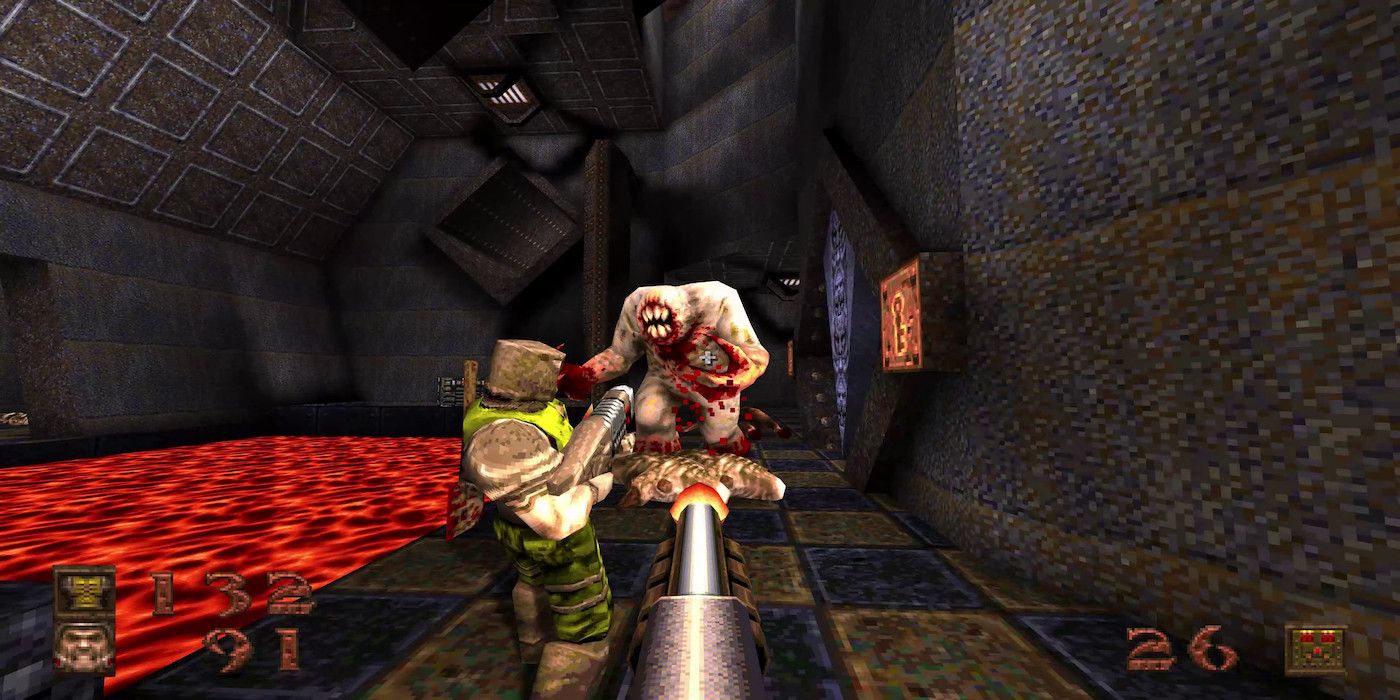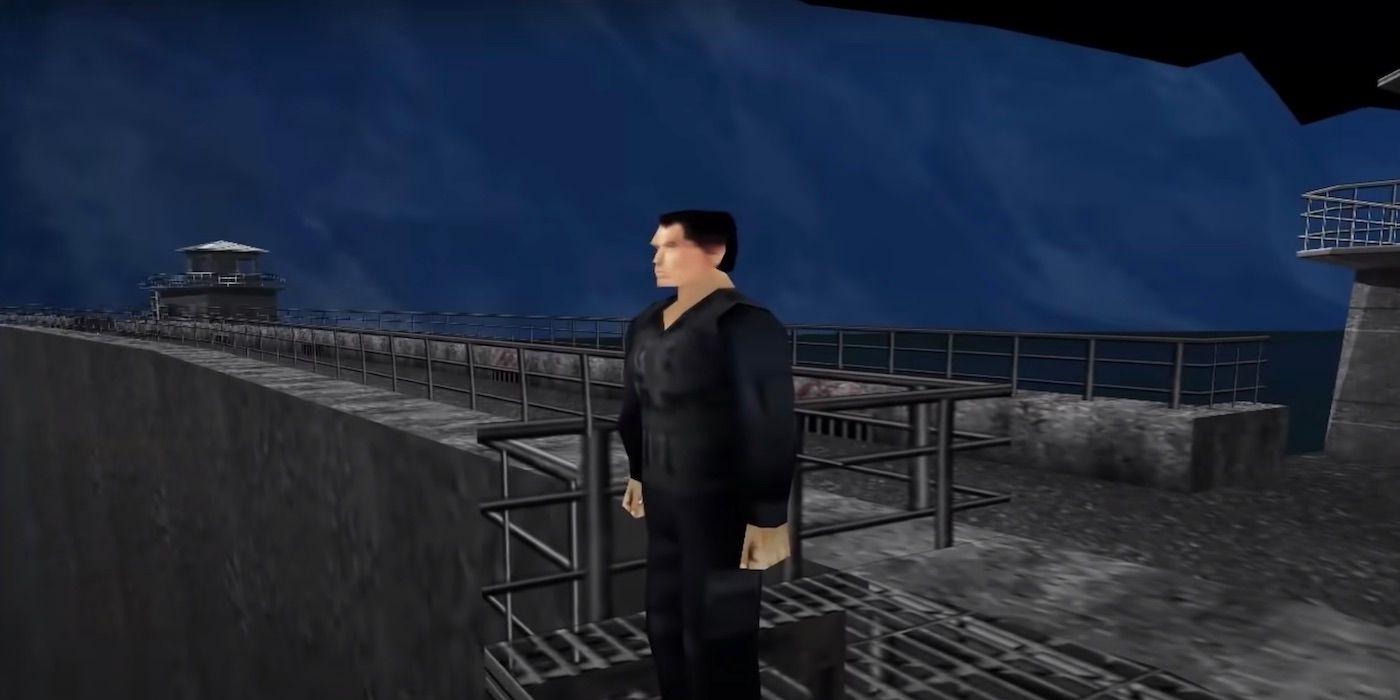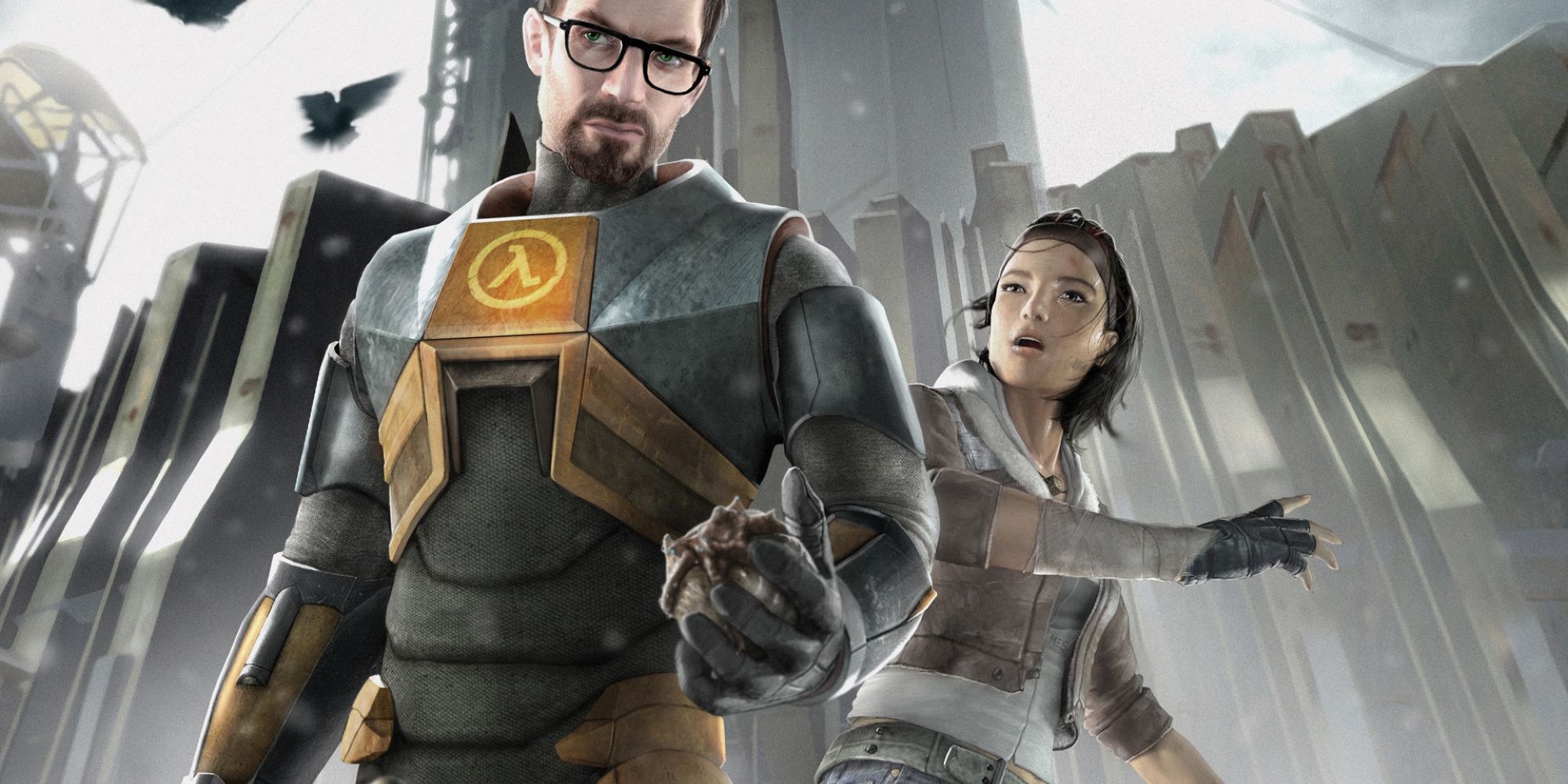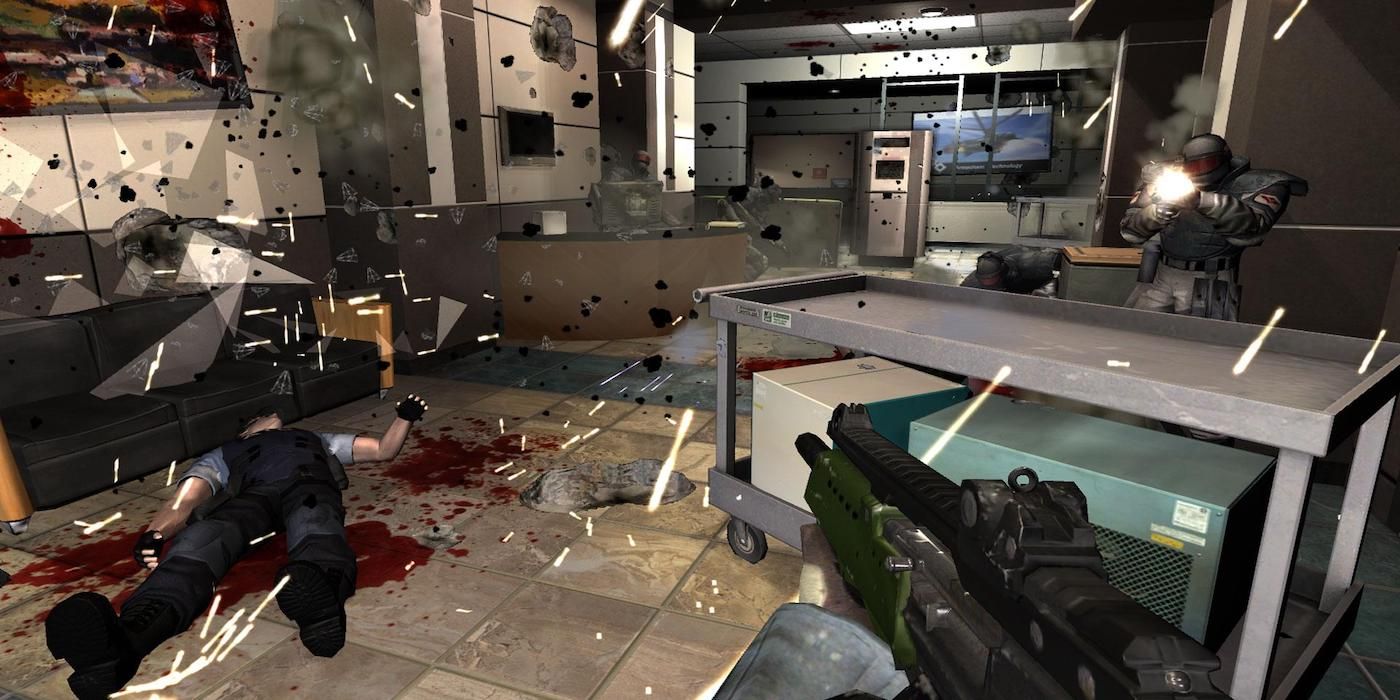After 28 years, the science-fiction action-adventure FPS System Shock is finally receiving a remake, which is being developed by Nightdive Studios and scheduled to release sometime this year. Despite having been released in 1994, the game is still widely beloved for being both an excellent experience and a historically significant FPS title.
Because the FPS genre has existed since the 1970s, System Shock is only one of many games that have led to modern FPS titles. Without games such as Doom, the history of this genre might've been incredibly different.
Maze (1973)
Maze, also known as Maze War, is a 1973 multiplayer FPS that was developed by three high school students at the NASA Ames Research Center. Beginning as a simple maze game where the player tries to find the exit, the programers added the ability for two, and later more, players to shoot at each other while traversing the maze. As the game grew, other functions such as a map editor, projectile graphics, and the ability to peak around conners were also added.
The game is possibly both the first 3D first-person game and the first FPS ever made. Maze's success led to other "rat's-eye view" titles such as 1974's Spasim and 1979's Akalabeth: World of Doom during the '70s and '80s.
Battlezone (1980)
Despite these rat's-eye view games receiving some success, the first FPS, and the first 3D game in general, to reach mainstream success was the 1980 arcade tank combat FPS Battlezone. Developed by Atari and inspired by their previous top-down shooter Tank, the game has players use their radar to find enemy tanks and shoot them while also avoiding the enemy's attacks.
To add to the experience, the arcade cabinet limited the player's view so that it seemed like they were looking through a periscope. Although a similar game was made already in 1975 titled Panther, it didn't each the same level of success as Battlezone.
Wolfenstein 3D (1992)
Often considered to be the game that truly started the FPS genre, Wolfenstein 3D is a 1992 FPS that was also a successor to the 1980s games Castle Wolfenstein and Beyond Castle Wolfenstein. The player controls an American spy of Jewish and Polish descent named William "B.J." Blazkowicz as he destroys the Nazi regime. But the reason Wolfenstein 3D is such a polished and well-made FPS for the time is because of the similar titles that preceded it.
In 1987, Incentive Software created an early 3D engine called Freescape that was used for the 1988 FPS titles Dark Side and Total Eclipse. Other games also included David Alan Smith's 1988 game The Colony and Core Design's 1990 game Corporation. Even Wolfenstein 3D's developer, id Software, had already made two first-person shooters in 1991: Hovertank 3D and Catacomb 3D. Instead of Wolfenstein 3D simply appearing out of nowhere, these games led to its success.
Doom (1993)
Only a year after officially establishing the FPS genre, id Software once again changed history by releasing the science fiction horror FPS Doom, which follows an unnamed space marine. After a teleportation experiment goes wrong on Mars, portals to Hell appear and the player must defeat the demonic armies. Unlike Wolfenstein 3D, Doom has variations in height, lighting effects, and more unique level designs.
The overwhelming popularity of Doom led to hundreds of "Doom clones" over the years, which includes several other influential titles such as Raven Software's Heretic, LucasArts' Star Wars: Dark Forces, and 3D Realms' Duke Nukem 3D. Also, although the 1987 FPS MIDI Maze was the first multiplayer "deathmatch" game, Doom coined the term and popularized this gameplay mode.
System Shock (1994)
Taking the RPG elements from games like Core Design's Corporation and Looking Glass Studios' own Ultima Underworld duology, System Shock is a science fiction horror action adventure game that fully established that FPS titles could have immersive worlds and stories. Set on a space station in the year 2072, the game follows a nameless hacker who must stop an evil A.I. named SHODAN with the help of a counter-terrorism consultant named Rebecca Lansing.
Along with the sequel System Shock 2, the System Shock series contained revolutionary non-linear gameplay, graphics, physics engine, and detailed environmental storytelling. These aspects would later directly inspire other prominent franchises such as BioShock, Deus Ex, and Dead Space.
Marathon (1994)
While the Halo franchise is extremely popular, many players don't know that the series is actually a sequel to Bungie's previous FPS titles, which includes the Marathon trilogy. Created as a sequel to the 1993 adventure dungeon crawler Pathways into Darkness, the original 1994 Marathon follows an unnamed security officer aboard the large Earth colony ship UESC Marathon, which has been compromised by both aliens and a rogue A.I. named Durandal.
With the help of the A.I. Leela, the player must deal with this threat by exploring the ship and fighting the aliens. The success of this title led to two sequels, and the series is known for pioneering gameplay ideas such as dual-wielding weapons, a "mouselook" control scheme, teaming up with NPCs, and unique multiplayer modes. The focus on a detailed story would later reappear in the iconic Halo franchise and other Bungie titles.
Quake (1996)
While struggling to develop the next Doom installment, id Software instead created the 1996 FPS Quake, which would spawn its own series. Combining gothic fiction and Lovecraftian themes, the game became known as a successor to Doom because of its darker art-style, fully 3D graphics, and expanded multiplayer modes.
Similarly to the plot of Doom, the player must defeat a creature known as "Quake" and his armies who are arriving on Earth through malfunctioning teleportation portals. Though Quake was not the first FPS to use fully 3D graphics, other titles such as Jumping Flash! and Descent had been released the year before, Quake's graphics were even better than those titles, and the game has influenced many modern 3D engines.
GoldenEye 007 (1997)
One of the titles that prove that licensed games can be good is the 1997 N64 game GoldenEye 007, which is based on the 1995 James Bond film GoldenEye. Developed by Rare, who has made other well-known games such as Perfect Dark, Donkey Kong, Banjo-Kazooie, and Battletoads, this game is known for its well-made multiplayer campaigns, some new gameplay ideas such as the ability to perform headshots, and proving that the FPS genre could thrive on consoles.
Similarly to the film, the player follows James Bond as he tries to stop former MI6 agent Alec Trevelyan from using a deadly satellite called GoldenEye. After this game, Halo: Combat Evolved would reaffirm that consoles could deliver excellent FPS titles.
Half-Life 2 (2004)
In 1998, Valve published their historic debut title Half-Life, which follows a scientist named Gordon Freeman who witnesses a portal to another dimension called Xen open up within his workplace, the Black Mesa Research Facility. To escape the facility, he must fight through aliens and avoid the military, who plans to kill every person involved in the incident. On its own, this game already greatly impacted the FPS genre by having great graphics and a story told in scripted sequences.
But the FPS genre truly changed forever after the release of the 2004 game Half-Life 2, which once again follows Gordon as he joins a resistance movement to save the Earth from a multidimensional alien empire called the Combine. Inspired by the 1998 action adventure game Trespasser, Half-Life 2 introduced a new physics engine and detailed character models that revolutionized not just the FPS genre but all of gaming, which is why fans are still waiting for Half-Life 3.
F.E.A.R. (2005)
Created by Monolith Productions, who also made other significant franchises such as Blood, No One Lives Forever, Condemned, and Middle-earth, F.E.A.R. First Encounter Assault Recon is a 2005 psychological horror action game and the first installment of the F.E.A.R. series. The player controls Point Man who is a rookie member of a group within the United States Army known as "F.E.A.R.," which investigates supernatural phenomena.
While on a mission to stop a supposed "rogue psychic," Point Man soon discovers that something deeper is going on when he starts seeing a ghost girl and learns that he has special abilities. While most aspects in the game are well-made, F.E.A.R. is best known for its A.I. that appears to react to the player in ways that had never been done before.

